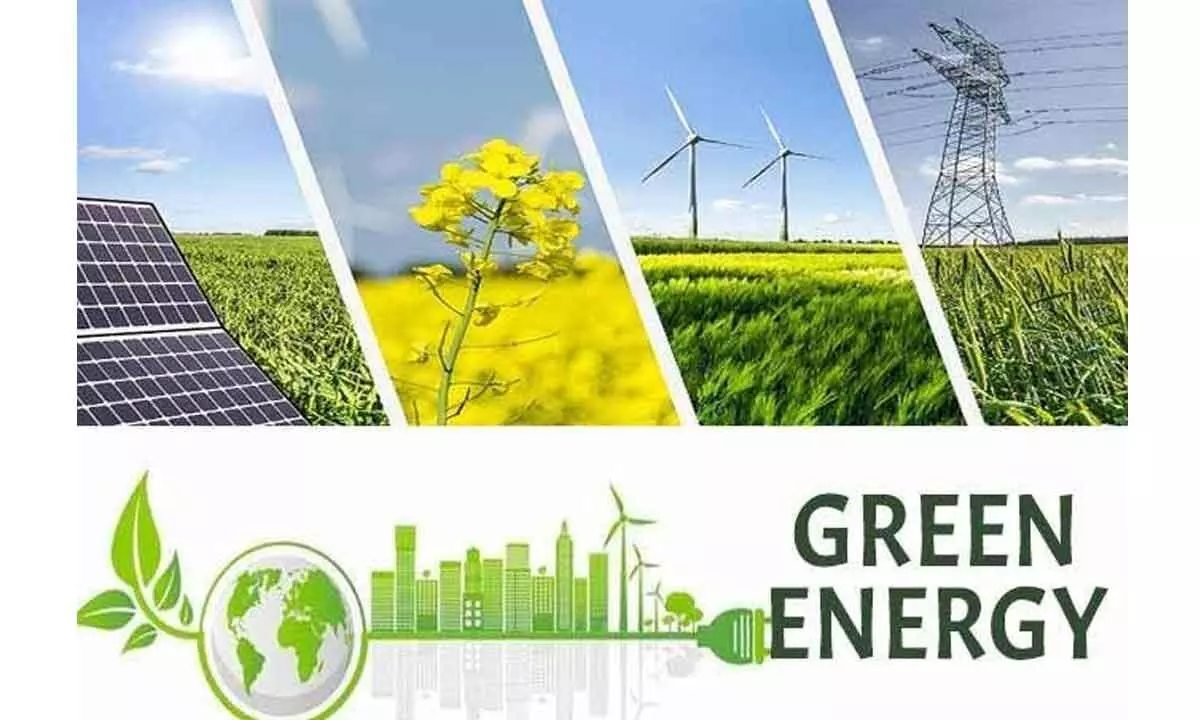India needs to evolve a streamlined green energy balancing act
Embracing renewable energy resources can be critical to India’s sustainable strategies
image for illustrative purpose

The Centre’s push for green hydrogen through the ‘National Green Hydrogen Policy’ exemplifies the country’s determination to promote low-emission fuels. By promoting investments in sustainable agriculture, India can secure a nutritious diet for its burgeoning population by 2047. The influx of impact investments into the agriculture sector, approximating $846 million, underscores the industry's willingness to integrate sustainability and climate-friendly practices into its core
India's target of achieving 50% energy from renewables by 2030 is rather ambitious, considering its current heavy reliance on coal. The challenge lies in simultaneously catering to the country's burgeoning energy demand, driven by rapid urbanisation and industrialisation and transitioning to a low-carbon economy.
A critical aspect of India’s energy transition is financing. The country’s demand for increased financial support from developed nations is based on the principle of historical responsibility for climate change. The unmet promise of developed countries to transfer $100 billion annually to support developing nations in their green transition highlights the challenges in mobilising adequate resources. This financial gap is a significant barrier for India, which requires substantial investments to meet its ambitious renewable energy targets and manage the economic implications of transitioning from coal. India has ambitious renewable energy (RE) plans. Its 2030 targets require almost 40 gigawatts per year of additional capacity of wind and solar.
This is just under 10% of the present installed total capacity in the country, for the fourth largest grid behind China, the U.S., and the European Union. Increasing the share of RE in the grid strengthens domestic, low- carbon energy security to the extent that it reduces reliance on alternative fossil fuels, such as coal. However, it does not ensure overall energy security due to RE’s inherent variability and the reality that the required energy storage technologies to address this variability are still not cost-effective at scale.
Embracing renewable energy resources will play a crucial part in the development of India’s sustainable strategy.
With pride, we stand as the world's third-largest producer of renewable energy, with 42% of our installed capacity sourced from clean and sustainable options. The nation’s goal of producing 500 GW renewable energy capacity by 2030 will unlock 80% of power capacity additions from renewable sources. Notably, the Centre’s push for green hydrogen through the ‘National Green Hydrogen Policy’ exemplifies the country’s determination to promote low-emission fuels.
By promoting investments in sustainable agriculture, India can secure a nutritious diet for its burgeoning population by 2047. The influx of impact investments into the agriculture sector, approximating $846 million, underscores the industry's willingness to integrate sustainability and climate-friendly practices into its core.
To combat the sector's significant contribution to CO2 emissions, the government must take decisive measures to achieve net zero targets by 2050. With freight transportation heavily reliant on fossil fuels, adopting cleaner alternatives and optimizing logistics processes is imperative. Encouragingly, sustainable transportation financing is witnessing remarkable progress through the collaborative efforts of the government, financial institutions, international partners, and the private sector.
India must bolster its efforts to bridge the gap between funding and climate goals. Currently, green finance accounts for a mere quarter of India's requirements, emphasizing the urgency to mobilize approximately $170 billion annually to fuel its climate ambitions
Robotics emerges as a beacon of hope, offering transformative solutions to enhance efficiency, curb waste generation, and minimize environmental footprints across sectors like manufacturing, transportation, and agriculture. These technological advancements can prove to be game changers in the drive toward sustainable growth.
Instead of coal, India hopes to meet 50 per cent of its energy requirements through renewable sources — wind, solar, etc. Incidentally, the country has achieved the target of 40 per cent of its power capacity from non-fossil fuels well ahead of time.
India is the third largest energy-consuming country in the world. It has become one of the largest sources of energy demand growth globally and has made significant progress towards its universal electrification target for residential users, with 100 million people gaining access in 2018 alone. Per capita electricity consumption across states and eight union territories is still around a third of the world average, and is expected to continue increasing despite the government’s intention to pursue strong energy efficiency standards, including LED lighting, efficient cooling and building standards.
The total Indian electricity demand has begun to expand again following a significant decline in 2020 due to Covid-19. The pandemic has affected the financial viability of the electricity distribution companies (DISCOMs), which were already struggling with mounting debts and a liquidity crunch.
India faces three principal challenges: (1) how to expand reliable energy access and use while maintaining affordability for consumers and financial stability for the DISCOMs; (2) how, at the same time, to integrate increasing shares of renewable energy in a secure and reliable manner; and (3) how to reduce emissions to achieve ambitious social and climate objectives while meeting economic goals.

